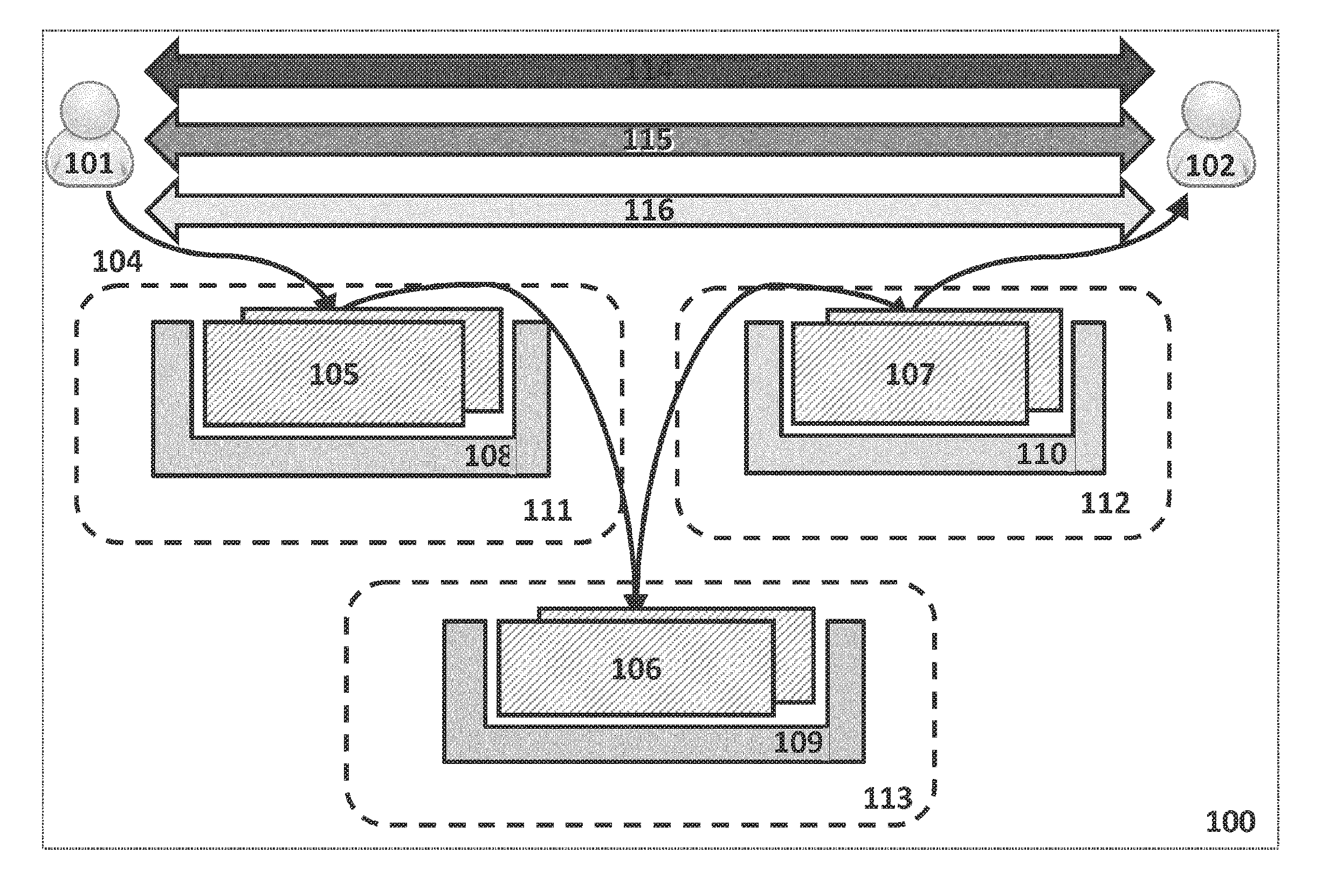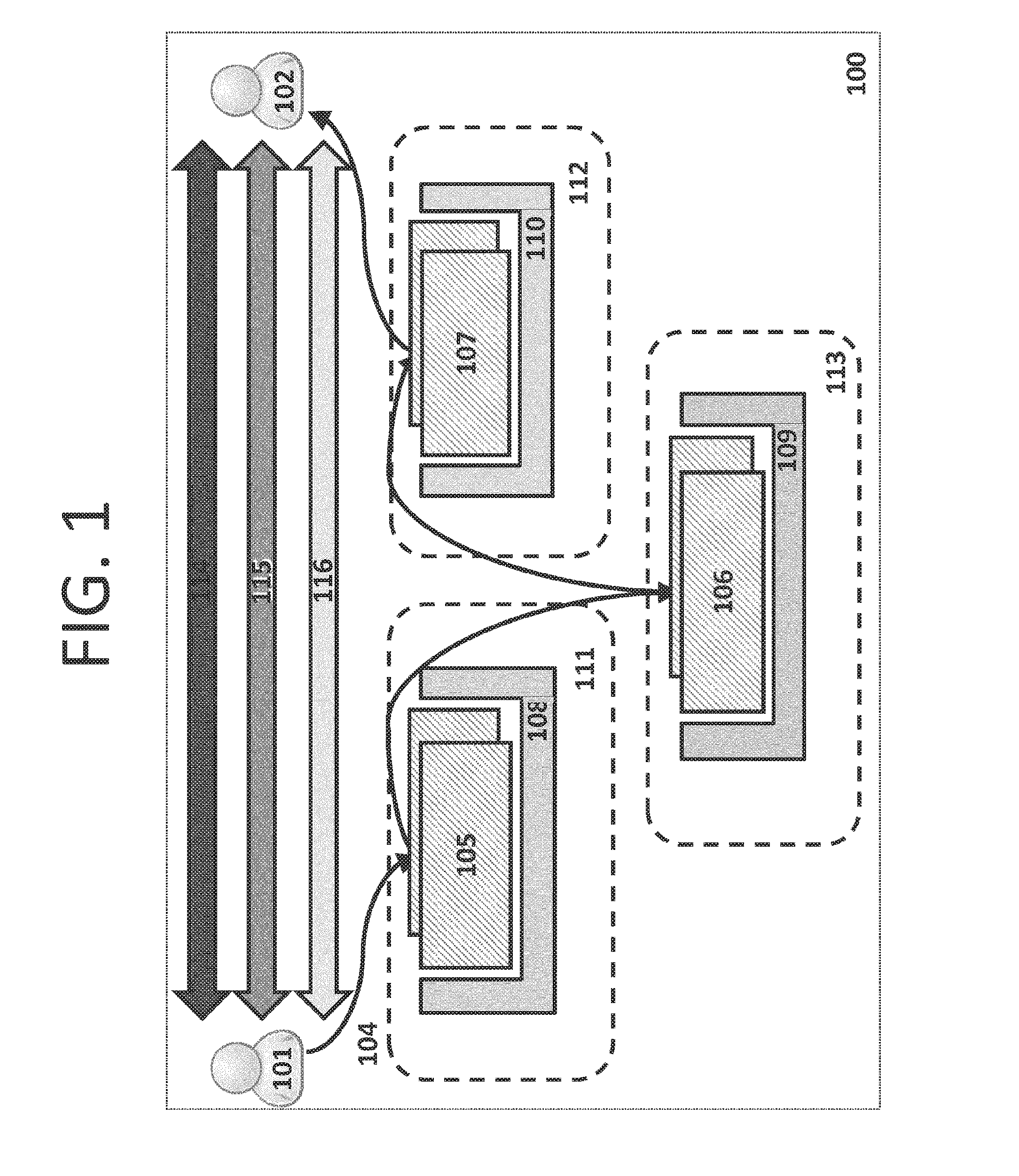Distributed programmable connection method to establish peer-to-peer multimedia interactions
a multimedia interaction and programmable connection technology, applied in the field of multimedia peertopeer communication, can solve the problems of not being able to communicate anonymously, skype or facetime can only establish connections between users, and users cannot communicate with people not registered with a particular service provider, so as to improve the flexibility of establishment and routing of communication links, accurate routing
- Summary
- Abstract
- Description
- Claims
- Application Information
AI Technical Summary
Benefits of technology
Problems solved by technology
Method used
Image
Examples
Embodiment Construction
[0040]The following terminology is used to describe the individual key elements of the present invention. The skilled person will recognize that all these elements may be implemented in software, or in combination with hardware. In any of these implementations, there are many other architectures and topologies that are not illustrated and it will be understood that all the individual elements described may also be implemented in many different constellations which still fall within the scope of the claims.
[0041]The term “Agent” is to be understood in the context of a “software agent” i.e. a computer program that provides basic functional entities and acts on behalf of a user or other program. In particular, the “Agents” in the context of the present invention are all, when in operation, intended to have the authority to decide which action is appropriate. Agents with such a level of autonomy may also be commonly known as, for example, “intelligent agents”, “autonomous agents” and “m...
PUM
 Login to View More
Login to View More Abstract
Description
Claims
Application Information
 Login to View More
Login to View More - R&D
- Intellectual Property
- Life Sciences
- Materials
- Tech Scout
- Unparalleled Data Quality
- Higher Quality Content
- 60% Fewer Hallucinations
Browse by: Latest US Patents, China's latest patents, Technical Efficacy Thesaurus, Application Domain, Technology Topic, Popular Technical Reports.
© 2025 PatSnap. All rights reserved.Legal|Privacy policy|Modern Slavery Act Transparency Statement|Sitemap|About US| Contact US: help@patsnap.com



